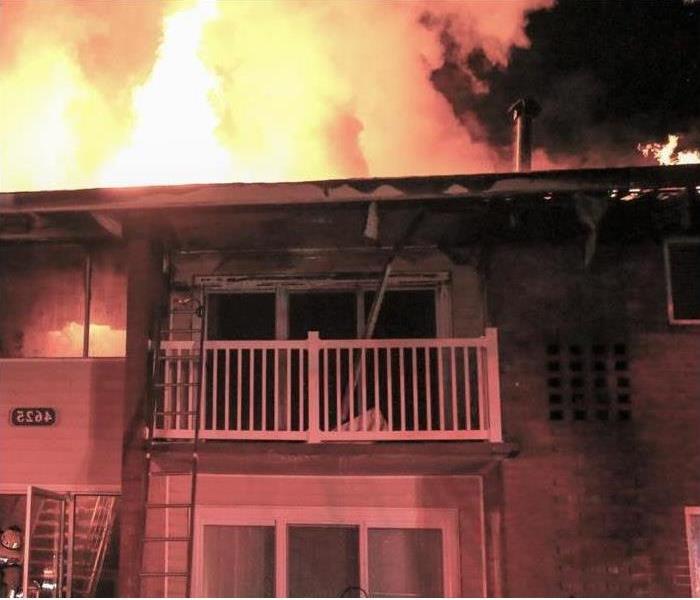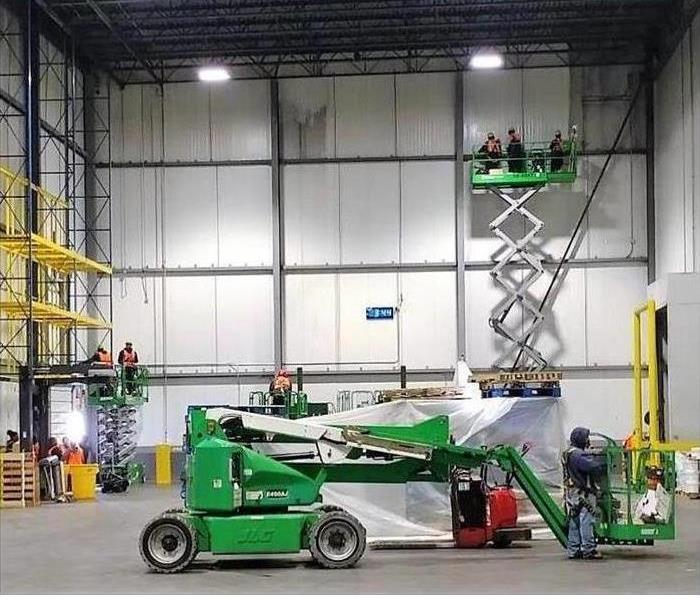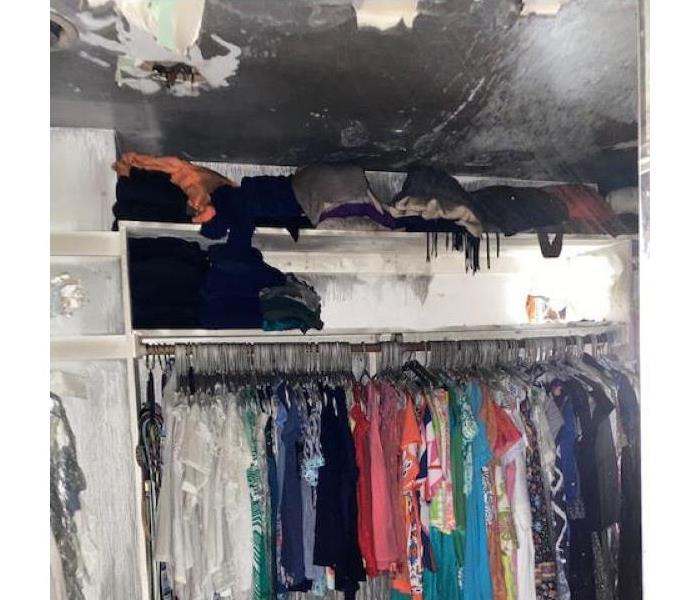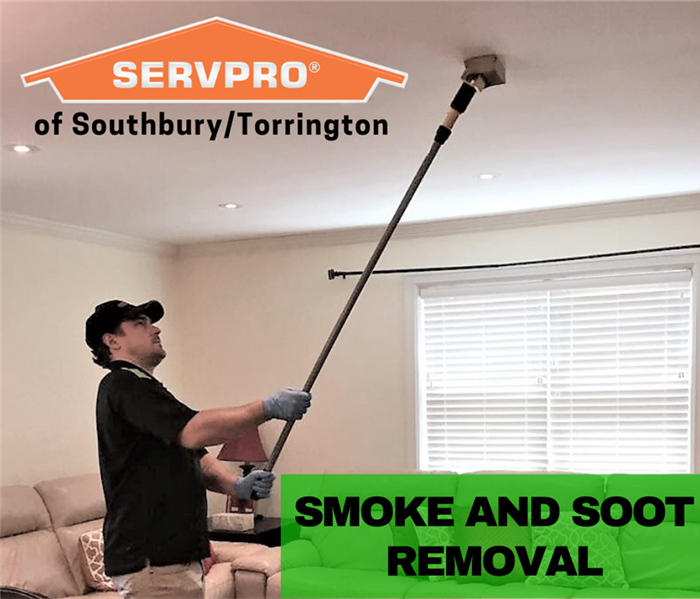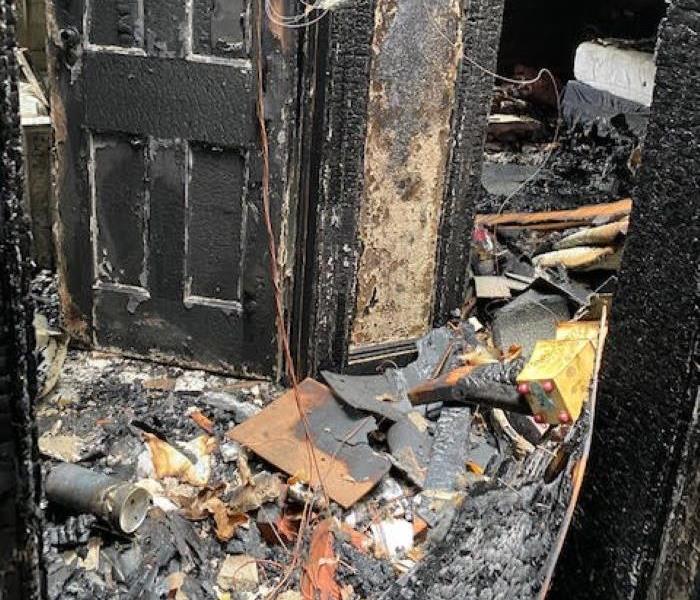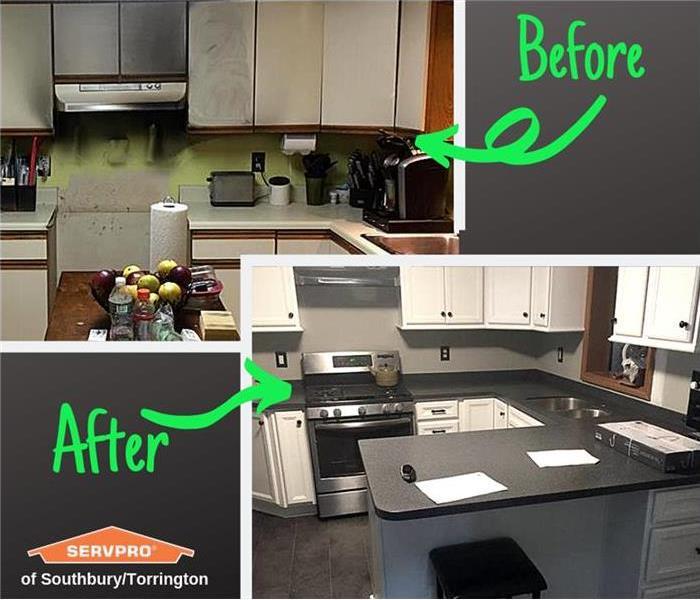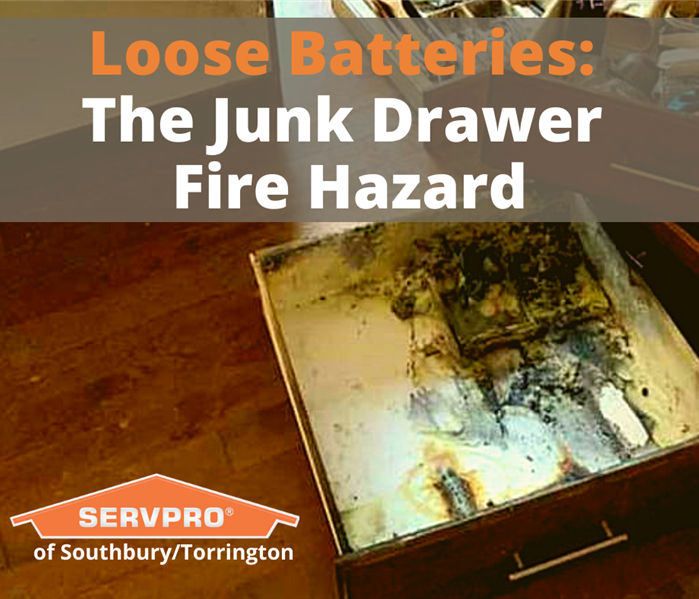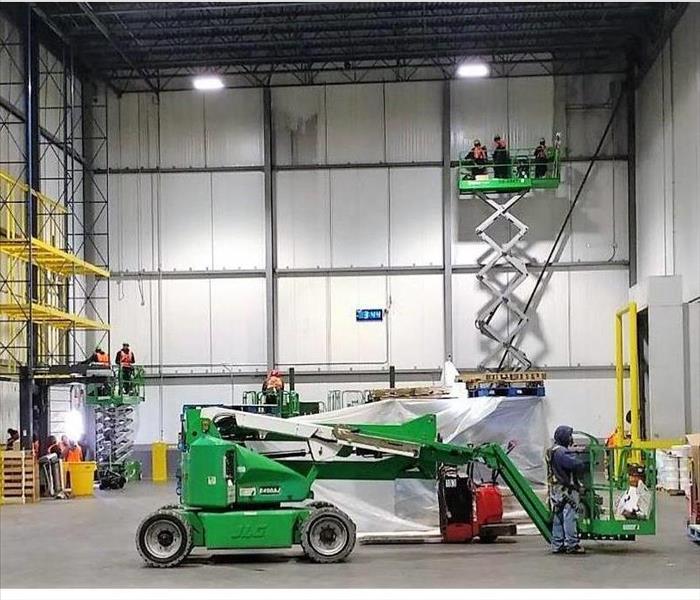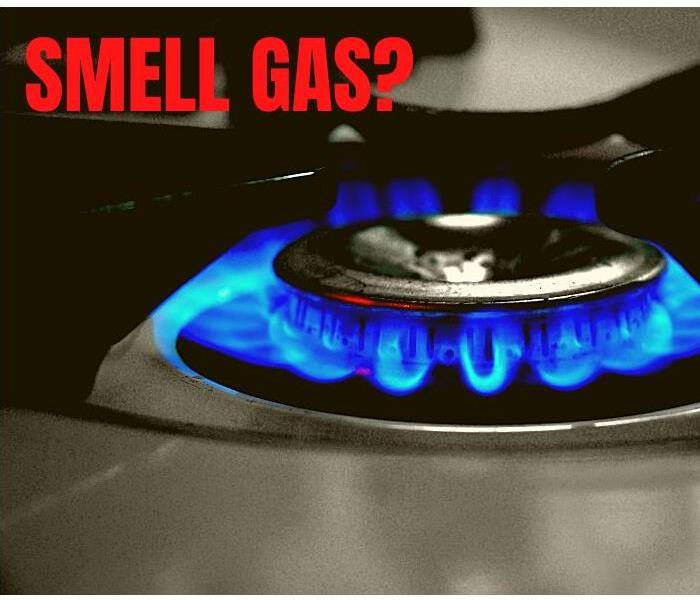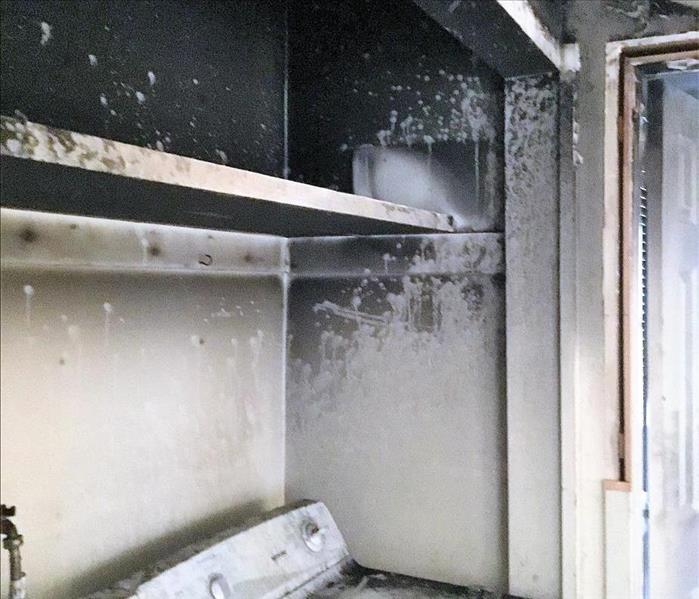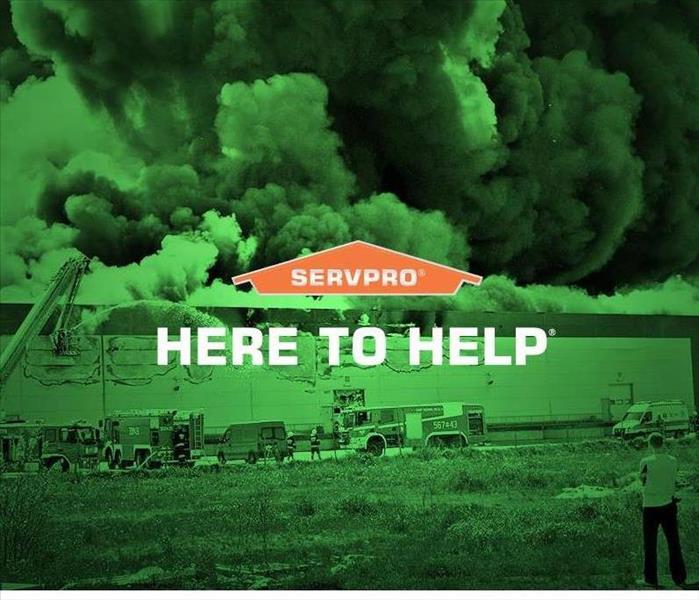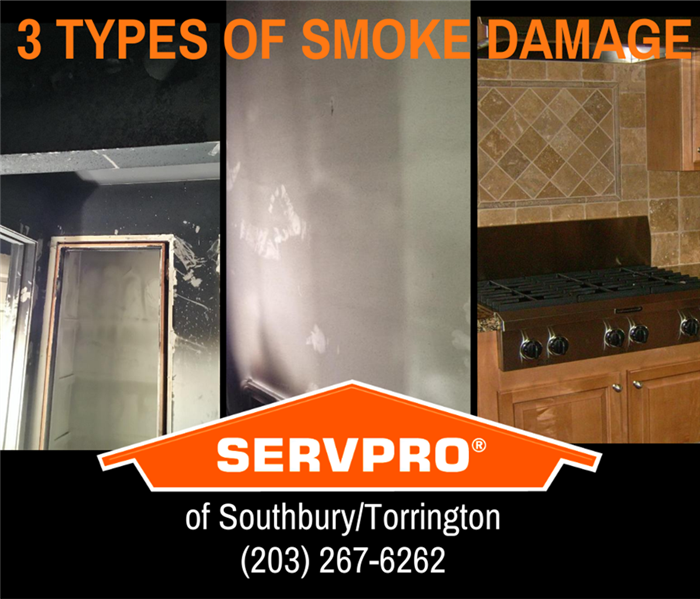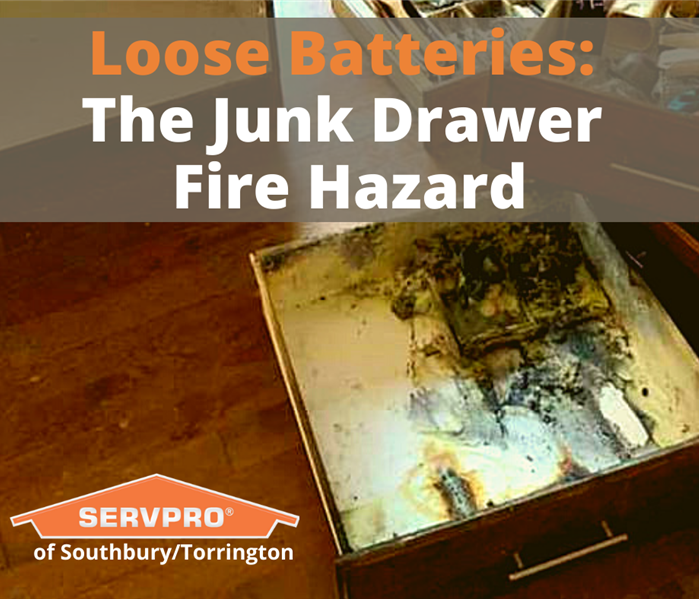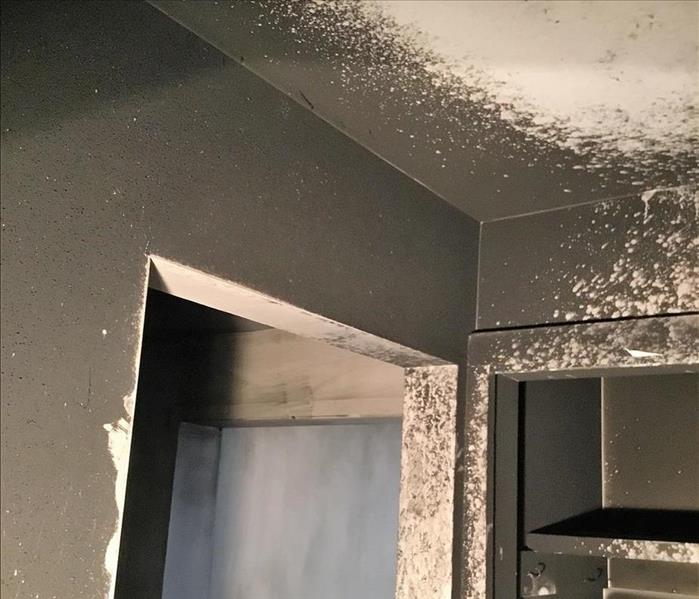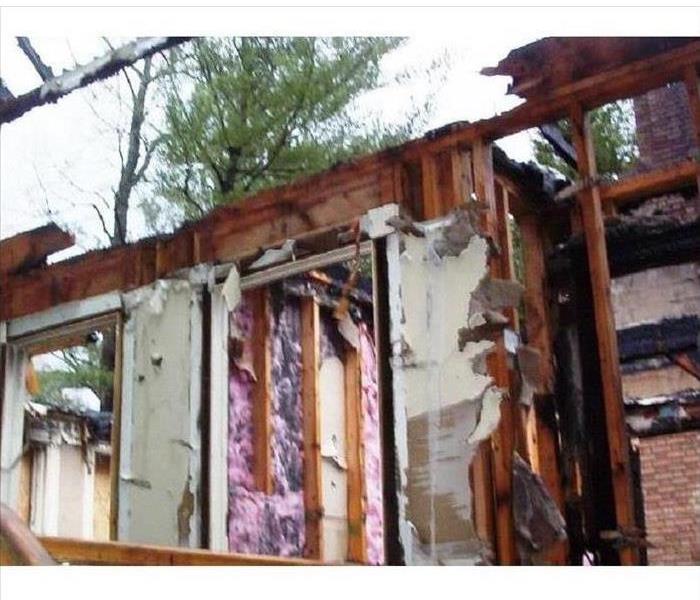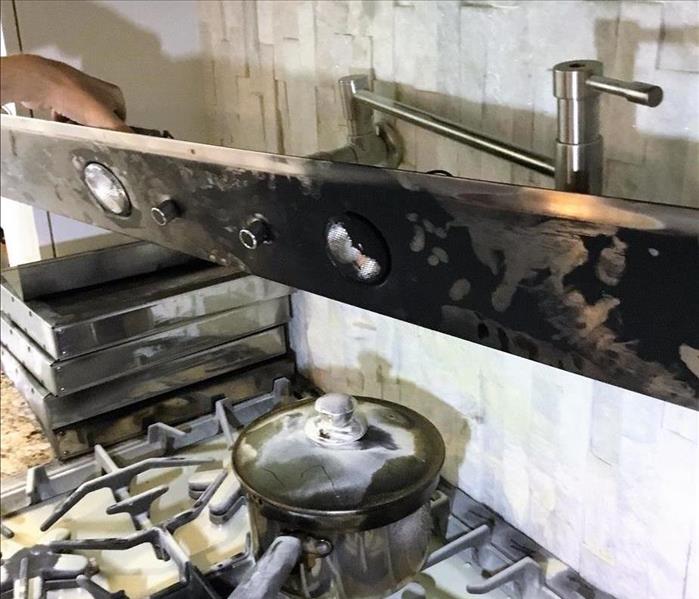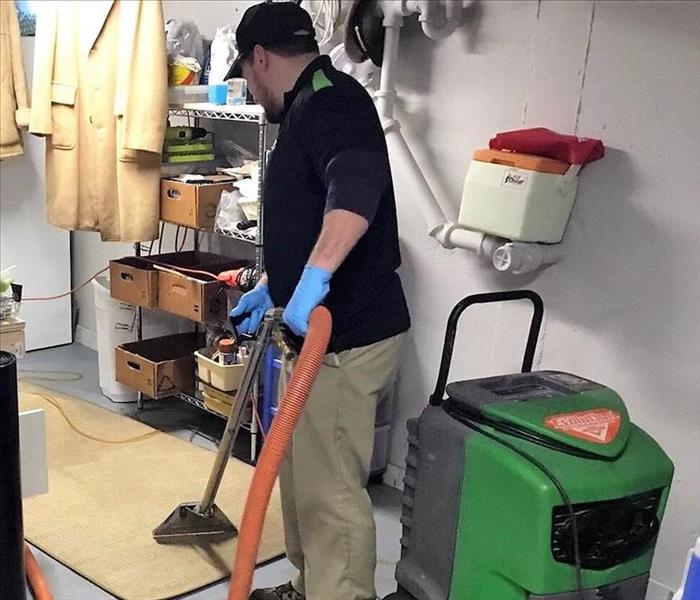Archived Fire Damage Blog Posts
Apartment Building Fires - Why Renter's Insurance is Important/
9/21/2022 (Permalink)
There are many residents of Southbury who rent their home or apartment and are unsure of whether they should purchase renter’s insurance.
While it’s true that your landlord has an insurance policy on the building, your belongings are not covered under their policy in the case of theft, or a a disaster such as a fire or flooding.
Having renter’s insurance is an inexpensive way of protecting your furniture, electronics and other belongings. In our years of commercial water and fire damage restoration in New Haven County, we have spoken to many apartment renters who were not insured. It’s devastating enough to wake up to a fire in your apartment and have to leave all of your belongings inside in order to get to safety. But finding out that you will not be reimbursed for your losses doubles the catastrophe.
In an apartment complex, you are vulnerable to damage from other units. If there is a fire, the smoke will travel easily and cause damage to your belongings even if the fire is several floors away. An upstairs neighbors broken washing machine becomes your problem when the water from flooding crashes through your ceiling.
We recommend that all renter's purchase insurance. Believe it or not, the average cost of renters insurance is $15 per month. That’s a small price to pay for the protection of your belongings. Most insurance companies offer renter’s insurance. If you are happy with your automobile insurance company, getting a quote on renter’s insurance from them would be a good start.
Commercial Property Fire Damage Restoration
8/22/2022 (Permalink)
Southbury businesses can not afford to have their doors closed for a lengthy period of time due to fire damage. As a business owner, examining your risk and taking preventative measures as well as educating your employees on procedures can help reduce the damage to your facility.
Assess the risk that fire hazards may pose to your business.
The National Fire Protection Association offers handbooks and other publications on the fire safety code in place for businesses. You can also call your local Connecticut fire department and ask the fire marshal if they are available to make a visit and identify any risks.
Maintain your sprinkler system.
An automatic sprinkler system will dramatically reduce the spread of a fire in your business as well as keep your employees and customers safe. Have your system properly maintained and inspected so that it works when you need it!
Check your smoke detectors and fire extinguishers.
Standard fire safety practices call for smoke detectors and fire extinguishers on every floor. Your best bet is multipurpose extinguishers, which will douse most small fires with ease, without shorting out your electronics.
Educate your employees.
Make sure all employees are aware of your fire safety plan by conducting a yearly fire drill and educating new employees. Training in how to use fire extinguishers should also be conducted.
A fire at your Torrington, CT business can be devastating and even force the closure of your business. SERVPRO of Southbury/Torrington has your back - give us a call at (203) 267-6262 if you have a fire at your commercial property.
What Burned?
7/14/2022 (Permalink)
One of the most important things we need to know in order to properly treat fire damage is what materials burned.
This information will help us determine what kind of smoke damage you have and establish the proper restoration plan. Not all smoke is equal and each different type requires a different method of cleaning. A quick breakdown of the types of smoke residue is:
- Wet Smoke Residue -Wet smoke residue occurs from smoldering fires with low heat. During these fires, synthetic materials such as plastics and rubbers, carpeting, furniture and electronics will have slowly smoldered. They tend to have a pungent odor and leave a sticky residue. During cleaning, wet smoke residue can smear, making cleanup more difficult.
- Dry Smoke Residue – Dry smoke residue occurs during fast burning fires that burn at a high temperature. Natural materials such as paper, leather, natural rubber and wood are present in dry smoke fires. Dry smoke residue is generally dry, powdery, gray in color and does not smear much. Homes that have experienced these fires are easier for our crew to restore.
- Protein Residue – Protein fires are most commonly caused when food burns in a kitchen. Protein residue is essentially invisible and a homeowner may be under a false impression that the damage is minor. However, there is actually soot covering the surfaces. If not properly removed, protein smoke will discolor paints, varnishes, and other finishes on your walls and cabinetry. One major indicator that there is an invisible residue after a kitchen fire is a very strong, obnoxious odor.
The SERVPRO of Southbury/Torrington team treats each fire damage job individually and will determine which course of action to take after arriving at your home. Call us at (203) 267-6262 for a quick response, an evaluation of your home's fire damage and a professional restoration plan.
Why Can't I Clean Up After a Fire Myself?
6/2/2022 (Permalink)
Not only does a house fire leave devastating structural damage when it carves its way through a home, the smoke that permeates the walls, floors and furnishings also causes substantial loss. House fires leave a layer of visible soot covering many of the surfaces of a home and unseen smoke in both hard and soft surfaces.
Soot cannot be cleaned off of surfaces easily and requires professional fire damage restoration. Soot is comprised of fine black particles (about ¼ the size of a dust particle) that is the byproduct of the chemical reaction produced by a fire. It settles on surfaces after being carried through the home by smoke. The composition of soot varies based on the type of solid matter that has burned. Some soot, such as from natural materials like paper or wood, is dry and easier to clean. Soot from synthetic materials, such as plastics and nylon, is sticky, thick and black and the removal process is more complex. It is important to call SERVPRO in to begin work immediately when you have a house fire because the soot that has settled on everything is acidic and will start to damage surfaces if not removed. When called to your home for fire damage restoration, the SERVPRO of Southbury/Torrington team will inspect the soot in your home to determine what the best course of treatment will be.
The damage that a house fire can cause is substantial and requires several layers of restoration. First, our team will board up the windows of a home and tarp the roof if required, to protect it from further damage. We then extract the water damage that is usually present due to the fire departments efforts. The next step is the removal of the smoke and soot from your home. Often, we will inventory and pack up your furnishings and belongings to be cleaned off site. To remove the smoke smell (which has most likely infiltrated everything in your home!), we use thermal foggers. Thermal foggers blanket your home with odor neutralizing particles, eliminating the smell permanently. Air scrubbers remove the smoke particles from your homes circulation system, making it safe to breathe again. Once the water, smoke and soot are removed, we clean and sanitize your home.
Finally, the rebuilding process can begin. Unlike some restoration companies, SERVPRO of Southbury/Torrington offers construction services by a fully licensed contractor. Chuck Lynch, is our Construction and Repair Manager, and his crew will rebuild your home, whether you require a few small repairs or a total rebuild. From the emergency board up to the last picture hung back on your wall, our team is with you 100% of the way through the restoration process after your home has a fire.
Smoke and Soot Removal After Home Fires
12/4/2021 (Permalink)
Some of the toughest jobs we respond to are house fires. It can be devastating, both physically and emotionally, for the family who has experienced such a loss. Not only is there damage from the fire itself, the smoke and soot can render many possessions unsalvageable. On top of that, water damage from fire fighting efforts adds another layer of damage. Our team knows how important it is to save whatever we can of your belongings. We have technicians trained and experienced in the art of content cleaning, which can take different forms depending on the item.
Dry-Cleaning: In order to remove smoke and soot from porous items such as clothing, furniture and drapery, we use the dry cleaning method. The soot has to be removed from the textiles before they are washed with water.
Ultrasonic: Non-porous items can go through a more vigorous cleaning than materials that soak up water. The ultrasonic treatment incorporates ultrasound and a cleaning solvent to rid your belongings of soot.
High-Pressure Water: In some circumstances, such as for larger items, our technicians opt to use high-pressure water treatment on non-porous household items.
Odor Removal: Smoke isn't the only thing that can cling to your possessions. The smell can linger after all visible signs of fire damage has disappeared. Our team may use thermal fogging or ozone treatments to make your home smelling good again.
With decades in the business, our team has helped hundreds of families back into their homes after house fires. If you are faced with such a loss, please know that we are available to help.
Turkey Fryers Can be a Household Danger This Thanksgiving
10/25/2021 (Permalink)
To be honest, I’ve never fried my Thanksgiving turkey. My family has always gone the traditional route and roasted our bird in the oven. I am tempted, however, to give it a try this year because so many people swear by how amazing and flavorful a fried turkey is.
Working in the fire damage restoration business, however, I’ve seen the damage a turkey fryer can do to a home. Turkey fryer fires are more common than you’d imagine and are devastating because everything surrounding the fire is engulfed in the flames.
So, why does frying a turkey carry the risk of fire?
I know. It’s cold in Connecticut by the last Thursday of November and you may not want to be standing outside while the rest of the meal is cooking in the kitchen. But turkeys should ALWAYS be fried outside. Just because you’ve been doing it in your garage for 10 years and never had a problem doesn’t mean it can't happen to you. Because the hot oil will spray everywhere when cooking, a 10’ radius around the fryer is necessary. It quickly starts a fire when making contact with combustible materials, such as wood or fabric. If the oil touches bare skin, it can also cause severe burns.
One common mistake people make is using a frozen turkey. This is because when a frozen turkey is submerged into a pot of oil, the oil doesn’t mix with the frozen water on the turkey. Instead, heavy pockets of water will sink to the bottom of the fryer while the oil surrounding them quickly heats it beyond its boiling point. The water then evaporates, expands, and splatters the oil everywhere, including the burner. Upon hitting the burner, the beads of oil ignite into flames that spread out in all directions. If you have marinated your turkey in a brine, make sure it is fully dry prior to putting in the oil.
Measure your oil carefully, making certain that it is 4-6” below rim after the turkey is palced in it. . When you lower the turkey in, be sure to be wearing oven mitts, long sleeves, pants, and close-toed shoes. Hot oil will stick to bare skin, causing severe burns that can result in an emergency trip to the hospital.
Even a seasoned turkey fryer can have an accident that causes disaster. The turkey can slip from your hands when lowering it into the fryer or your rope-and-pulley system could break, spilling the oil everywhere and igniting a fire. The point is that something can always go wrong when frying a turkey; therefore, you should always be prepared and have a fire extinguisher by your side at all times.
We hate to see someone's holiday ruined by a house fire due to a cooking accident. But if you do have a Thanksgiving disaster, we have teams on call 24/7 - even on the holidays and are Here to Help.
Do You Need Renter's Insurance?
9/24/2021 (Permalink)
There are many residents of Southbury who rent their home or apartment and are unsure of whether they should purchase renter’s insurance.
While it’s true that your landlord has an insurance policy on the building, your belongings are not covered under their policy in the case of theft, or a a disaster such as a fire or flooding.
Having renter’s insurance is an inexpensive way of protecting your furniture, electronics and other belongings. In our years of commercial water and fire damage restoration in New Haven County, we have spoken to many apartment renters who were not insured. It’s devastating enough to wake up to a fire in your apartment and have to leave all of your belongings inside in order to get to safety. But finding out that you will not be reimbursed for your losses doubles the catastrophe.
In an apartment complex, you are vulnerable to damage from other units. If there is a fire, the smoke will travel easily and cause damage to your belongings even if the fire is several floors away. An upstairs neighbors broken washing machine becomes your problem when the water from flooding crashes through your ceiling.
We recommend that all renter's purchase insurance. Believe it or not, the average cost of renters insurance is $15 per month. That’s a small price to pay for the protection of your belongings. Most insurance companies offer renter’s insurance. If you are happy with your automobile insurance company, getting a quote on renter’s insurance from them would be a good start.
Paper or Plastic?
8/21/2021 (Permalink)
In many of the properties that we treat after a fire, the amount of damage is not always visible.
In fact, when you look at photos of the home or building, things might look like they are fine. However, smoke and soot residues are the hidden damage that a fire causes and often require more extensive restoration than the damage caused by the flames themselves.
There are different types of fire damage and each requires its own unique cleaning plan. The team at SERVPRO of Southbury/Torrington is trained in identifying the different types of smoke damage and how to properly treat your home accordingly.
Dry Smoke
Dry smoke damage is caused when substances such as paper and wood are the fuel for the fire. These fires are fast burning, have high temperatures and the heat rises therefore the smoke rises. Because the residue is powdery and dry, it is often simpler to clean since it is easy to wipe off. However, it can fall into cracks and porous surfaces, and while the soot may be hidden from view, the smell will remain.
Wet Smoke
Wet smoke damage typically comes from fires in which plastic, rubber and other synthetic materials have burned. These fires are a lower temperature. They can be described as having a smoldering, pungent odor and they leave a sticky and thick residue that is more difficult to remove.
Protein Residue
Protein residue is left behind after the evaporation of organic material such as food. The residue is produced by evaporation of material rather than from a fire. The residue is almost invisible however it discolors varnishes, paints, and finishes. It also gives off a strong, offensive odor that our techs know well and can easily identify. Because it is invisible to the eye, however, a homeowners might get frustrated with the pungent smell since they can’t see the source.
When we inspect your fire damaged structure, we will determine which method of cleaning is required. Depending on the type of smoke damage and the surface that is affected, we may utilize the following cleaning methods to remove smoke and soot damage.
- Dry Sponging
- Wet Cleaning
- High Efficiency Particulate Air-filtration (HEPA) Vacuuming
- Thermal Fogging
We don't expect our customers to become experts in fire damage restoration however we know that a little knowledge helps you understand why we are cleaning your house in a particular way.
Did You Know? Less Common Causes of Household Fires.
7/19/2021 (Permalink)
Homes with old electrical wiring.
Pots left unattended on a stovetop.
Candles accidentally tipped over.
We all know these common causes of household fires. However, there are other fire risks in your home that you may not be aware of.
Microwaves
There are a number of ways in which microwaves pose a fire risk.There might be a small amount of metal on a dish or takeout container that can result in a fire. Foods such as popcorn can easily catch fire if left in too long. If you have a fire in your microwave, turn it off immediately to prevent the fan feeding oxygen to flames and wait until it suffocates. Only open the door when you’re certain the fire is extinguished.
Batteries
All batteries pose a fire risk, even those with a weak charge. However 9 volt batteries are the biggest culprit of fire due to the close proximity of their terminals, which can easily short. When left loose in a drawer or container, the batteries can spark and cause a fire. If you don’t have a battery case, store batteries standing up, placing electrical tape over the ends of each battery (all types – not just 9 volts) to prevent shorts. Do not store batteries in metal containers, or near other metal items such as keys, steel wool, and aluminum foil. When discarding batteries, cover the ends with tape so that they don’t start a fire in the garbage can.
Light bulbs
Using a light bulb with wattage too high for a given outlet, called overlamping, can easily result in a home fire. Determining proper wattage is easy. Simply locate the proper wattage on each fixtures outlet. If the fixture is unmarked, stay under 60 watts to be safe. Take caution when using CFLs (compact fluorescent bulbs). These spiral shaped bulbs could result in fire when improperly used. Avoid using CFLs in any lighting unit where the base of the bulb is enclosed by the fixture, such as with track and recessed lighting. If your CFLs are burning out early and you notice they are brown at the base when you remove them, the bulbs are overheating and could result in fire. Choose a cooler option, such as LED.
Laptops
Laptops can get pretty hot during normal operation. Never leave your laptop on a bed or couch, or any place where its cooling vents are blocked.
Stacks of newspaper and magazines
When left near a heat source, such as a wood stove, these items can ignite quickly. If you must keep old newspapers or magazines, be certain to store them in a cool, dry place in short stacks. It may seem a bit unlikely, but we’ve seen the damage having flammable clutter can do to a home.
When a Garaged Vehicle Catches Fire
6/6/2021 (Permalink)
We recently had a job at a commercial property in which a truck caught fire on a loading dock, causing a massive amount of smoke and soot damage to the warehouse. It’s not the first time we’ve restored a structure of smoke and soot after a vehicle fire. When a car or lawn tractor is parked in a garage, a small fire can turn catastrophic quickly.
Because of the abundance of fuel in a vehicle, a fire can start and spread quickly.
When the car is parked in the garage of a home or business, this can cause structural, smoke and soot damage throughout the entire building. Vehicles can catch fire for a number of reasons:
- Fuel or Oil Leaks - not only will these flammable liquids stain your garage floor, parts of your car, including the exhaust system, can get hot enough to start a fire.
- Corroded or cracked wiring can cause too much electrical current to be flowing through your system. One sign that this could be a problem in your vehicle is if the fuses blow more often than normal.
- A hot engine, catalytic converter, brakes or exhaust system that comes into contact with a corroded wire can spark a fire as well.
- Electrical Issues - Heated seats, your car battery, and the heating system can all potentially overheat. An aftermarket accessory that has been installed in your car, such as an audio system, might also cause an overload and start a fire.
Many vehicle fires can be avoided with careful maintenance and attention to leaks and old wiring however not all garage fires can be avoided. For those times, SERVPRO of Southbury/Torrington is here to help. We have extensive experience restoring homes and businesses of the smoke and soot a fire leaves.
Smell Gas in Your Home? Here's What to Do.
12/7/2020 (Permalink)
SUSPECT A GAS LEAK? USE YOUR SENSES
See
A white cloud, mist or fog, bubbles in still water, blowing dust, or dead or dying plants.
Smell
A distinct rotten egg-like odor.
Hear
Unusual hissing, roaring or whistling.
IF YOU SUSPECT A LEAK, DO ...
Leave
Immediately move to a safe location. Don't start your car, as a spark could ignite.
Call 911
Call 911. Don't assume someone else made the call. Report your location, including cross streets, and whether there's digging nearby.
IF YOU SUSPECT A LEAK, DON'T ...
- Smoke.
- Light a match.
- Open doors or windows.
- Use your landline or cell phone.
- Switch on/off appliances.
- Use a flashlight.
- Start a car.
- Attempt to make repairs.
In many cases, a gas leak will not result in a house fire. However, if one does occur in your home, please call us for immediate fire damage restoration service.
Keep Us Out of Your Kitchen This Thanksgiving
11/2/2020 (Permalink)
Cooking is one of the most common causes of household fires in Connecticut, responsible for 50% of home fires.
According to the National Fire Protection Association, two-thirds of home cooking fires started with the ignition of food or other cooking materials. Ranges accounted for the largest share (62%) of home cooking fire incidents and ovens accounted for 16%.
It only takes a brief moment for a kitchen fire to start and quickly grow out of control.
- Be on alert! Don't use the stove or stove top if you are sleepy or have consumed alcohol.
- Stay in the kitchen while you are frying, grilling, or broiling food.We have all walked away for a moment while cooking only to remember we were cooking by the smell of something burning. If you leave the kitchen for even a short period of time, turn off the stove.
- Use a timer to remind you of items that are cooking. If you have something cooking, check it regularly
- Keep flammables at a safe distance. Keep anything that can catch fire — potholders, wooden utensils, food packaging, towels or curtains — away from your stove top.
- If you have a small grease fire, smother the flames by sliding a lid over the pan and turning off the burner. Leave the pan covered until it is completely cooled.
- If the fire cannot be contained easily, just get out! When you leave, close the door behind you to help contain the fire. More than half (55%) of reported non-fatal home cooking fire injuries occurred when the victims tried to fight the fire themselves.
- Call 9-1-1 from outside the home
It only takes a moment for a fire to start in your home that can cause substantial damage. In addition to the smoke and soot damage left behind, there will also be water damage from firefighting efforts.
After fire emergency services have made your home safe, call SERVPRO of Southbury/Torrington at (203) 267-6262 for fire and water damage restoration. We offer professional services that include water damage clean up, smoke and soot removal, the removal of damaged items as well as the rebuilding of your home to complete the restoration.
Commercial Fire Damage Clean Up and Restoration
10/5/2020 (Permalink)
Southbury businesses can not afford to have their doors closed for a lengthy period of time due to fire damage.
As a business owner, examining your risk and taking preventative measures as well as educating your employees on procedures can help reduce the damage to your facility.
Assess the risk that fire hazards may pose to your business. The National Fire Protection Association offers handbooks and other publications on the fire safety code in place for businesses. You can also call your local Connecticut fire department and ask the fire marshal if they are available to make a visit and identify any risks.
Maintain your sprinkler system. An automatic sprinkler system will dramatically reduce the spread of a fire in your business as well as keep your employees and customers safe. Have your system properly maintained and inspected so that it works when you need it!
Check your smoke detectors and fire extinguishers. Standard fire safety practices call for smoke detectors and fire extinguishers on every floor. Your best bet is multipurpose extinguishers, which will douse most small fires with ease, without shorting out your electronics.
Educate your employees. Make sure all employees are aware of your fire safety plan by conducting a yearly fire drill and educating new employees. Training in how to use fire extinguishers should also be conducted.
A fire at your Torrington, CT business can be devastating and even force the closure of your business.
SERVPRO of Southbury/Torrington has your back - give us a call at (203) 267-6262 if you have a fire at your commercial property.
What Burned? An Important Factor in Fire Damage Restoration.
9/1/2020 (Permalink)
One of the most important things we need to know in order to properly treat fire damage is what materials burned.
This information will help us determine what kind of smoke damage you have and establish the proper restoration plan. Not all smoke is equal and each different type requires a different method of cleaning. A quick breakdown of the types of smoke residue is:
- Wet Smoke Residue -Wet smoke residue occurs from smoldering fires with low heat. During these fires, synthetic materials such as plastics and rubbers, carpeting, furniture and electronics will have slowly smoldered. They tend to have a pungent odor and leave a sticky residue. During cleaning, wet smoke residue can smear, making cleanup more difficult.
- Dry Smoke Residue – Dry smoke residue occurs during fast burning fires that burn at a high temperature. Natural materials such as paper, leather, natural rubber and wood are present in dry smoke fires. Dry smoke residue is generally dry, powdery, gray in color and does not smear much. Homes that have experienced these fires are easier for our crew to restore.
- Protein Residue – Protein fires are most commonly caused when food burns in a kitchen. Protein residue is essentially invisible and a homeowner may be under a false impression that the damage is minor. However, there is actually soot covering the surfaces. If not properly removed, protein smoke will discolor paints, varnishes, and other finishes on your walls and cabinetry. One major indicator that there is an invisible residue after a kitchen fire is a very strong, obnoxious odor.
The SERVPRO of Southbury/Torrington team treats each fire damage job individually and will determine which course of action to take after arriving at your home. Call us at (203) 267-6262 for a quick response, an evaluation of your home's fire damage and a professional restoration plan.
I Didn't Think of That...The Causes of Household Fires That Nobody Talks About
7/20/2020 (Permalink)
Homes with old electrical wiring.
Pots left unattended on a stovetop.
Candles accidentally tipped over.
We all know these common causes of household fires. However, there are other fire risks in your home that you may not be aware of.
Microwaves
There are a number of ways in which microwaves pose a fire risk.There might be a small amount of metal on a dish or takeout container that can result in a fire. Foods such as popcorn can easily catch fire if left in too long. If you have a fire in your microwave, turn it off immediately to prevent the fan feeding oxygen to flames and wait until it suffocates. Only open the door when you’re certain the fire is extinguished.
Batteries
All batteries pose a fire risk, even those with a weak charge. However 9 volt batteries are the biggest culprit of fire due to the close proximity of their terminals, which can easily short. When left loose in a drawer or container, the batteries can spark and cause a fire. If you don’t have a battery case, store batteries standing up, placing electrical tape over the ends of each battery (all types – not just 9 volts) to prevent shorts. Do not store batteries in metal containers, or near other metal items such as keys, steel wool, and aluminum foil. When discarding batteries, cover the ends with tape so that they don’t start a fire in the garbage can.
Light bulbs
Using a light bulb with wattage too high for a given outlet, called overlamping, can easily result in a home fire. Determining proper wattage is easy. Simply locate the proper wattage on each fixtures outlet. If the fixture is unmarked, stay under 60 watts to be safe. Take caution when using CFLs (compact fluorescent bulbs). These spiral shaped bulbs could result in fire when improperly used. Avoid using CFLs in any lighting unit where the base of the bulb is enclosed by the fixture, such as with track and recessed lighting. If your CFLs are burning out early and you notice they are brown at the base when you remove them, the bulbs are overheating and could result in fire. Choose a cooler option, such as LED.
Laptops
Laptops can get pretty hot during normal operation. Never leave your laptop on a bed or couch, or any place where its cooling vents are blocked.
Stacks of newspaper and magazines
When left near a heat source, such as a wood stove, these items can ignite quickly. If you must keep old newspapers or magazines, be certain to store them in a cool, dry place in short stacks. It may seem a bit unlikely, but we’ve seen the damage having flammable clutter can do to a home.
Why Professional Restoration is Recommended After a House Fire
6/8/2020 (Permalink)
Not only does a house fire leave devastating structural damage when it carves its way through a home, the smoke that permeates the walls, floors and furnishings also causes substantial loss. House fires leave a layer of visible soot covering many of the surfaces of a home and unseen smoke in both hard and soft surfaces.
Soot cannot be cleaned off of surfaces easily and requires professional fire damage restoration. Soot is comprised of fine black particles (about ¼ the size of a dust particle) that is the byproduct of the chemical reaction produced by a fire. It settles on surfaces after being carried through the home by smoke. The composition of soot varies based on the type of solid matter that has burned. Some soot, such as from natural materials like paper or wood, is dry and easier to clean. Soot from synthetic materials, such as plastics and nylon, is sticky, thick and black and the removal process is more complex. It is important to call SERVPRO in to begin work immediately when you have a house fire because the soot that has settled on everything is acidic and will start to damage surfaces if not removed. When called to your home for fire damage restoration, the SERVPRO of Southbury/Torrington team will inspect the soot in your home to determine what the best course of treatment will be.
The damage that a house fire can cause is substantial and requires several layers of restoration. First, our team will board up the windows of a home and tarp the roof if required, to protect it from further damage. We then extract the water damage that is usually present due to the fire departments efforts. The next step is the removal of the smoke and soot from your home. Often, we will inventory and pack up your furnishings and belongings to be cleaned off site. To remove the smoke smell (which has most likely infiltrated everything in your home!), we use thermal foggers. Thermal foggers blanket your home with odor neutralizing particles, eliminating the smell permanently. Air scrubbers remove the smoke particles from your homes circulation system, making it safe to breathe again. Once the water, smoke and soot are removed, we clean and sanitize your home.
Finally, the rebuilding process can begin. Unlike some restoration companies, SERVPRO of Southbury/Torrington offers construction services by a fully licensed contractor. Chuck Lynch, is our Construction and Repair Manager, and his crew will rebuild your home, whether you require a few small repairs or a total rebuild. From the emergency board up to the last picture hung back on your wall, our team is with you 100% of the way through the restoration process after your home has a fire.
Creosote Buildup is the Primary Cause of Chimney Fires in Harwinton Homes
12/11/2019 (Permalink)
Nothing is more devastating in our work than arriving at home that has been destroyed by a fire - especially during the holiday season.
The primary cause of home fires is often a chimney fire. Every year in the United States, there are over 25,000 chimney fires, which incur $125 million-plus in property damage Flames which have migrated up the chimney cause cracking, melting and warping to the masonry or metal chimney interior and eventually spread to the rest of the home. This is often caused by a buildup of creosote.
How to Eliminate the Creosote in Your Chimney!
Creosote is a highly flammable by-product of a fire that coats chimney walls and condenses as it moves from the hot fireplace or wood stove into the cooler chimney. With a thick build up of creosote, it can catch fire in a hot chimney and move up the flue.
To reduce the amount of creosote in your chimney, pay attention to these factors:
1. Wood
Burn only seasoned hardwood that has dried for at least six months and contains a moisture content of no more than 20 percent. Unseasoned wood creates cooler smoke than seasoned wood, resulting in buildup.
2. Air Supply
Keep the damper (a metal plate in the flue that regulates the draft) open during a fire to maintain adequate airflow. Also, refrain from overstuffing the wood box, which also restricts air flow.
3. Flue Liner
The flue liner is the layer between the flue and chimney walls. If it is uninsulated, we recommend that you insulate it by either wrapping a heat-resistant insulation blanket around the liner or pouring an insulation mix like vermiculite into the space between the flue liner and flue. An insulated flue liner will prevent flue temperatures from getting too cool—a condition that could encourage fire by-products to condense and form creosote.
4. Creosote Removal Products.
As a preventative measure, you can apply a creosote remover in your fire- they come in a powdered and liquid forms as well as logs and both are simply burned in your wood stove.
Chimney fires can be prevented with regular maintenance and inspections, saving homes and lives.
With Winter Comes Chimney Fires and Puffbacks in Watertown Homes
11/12/2019 (Permalink)
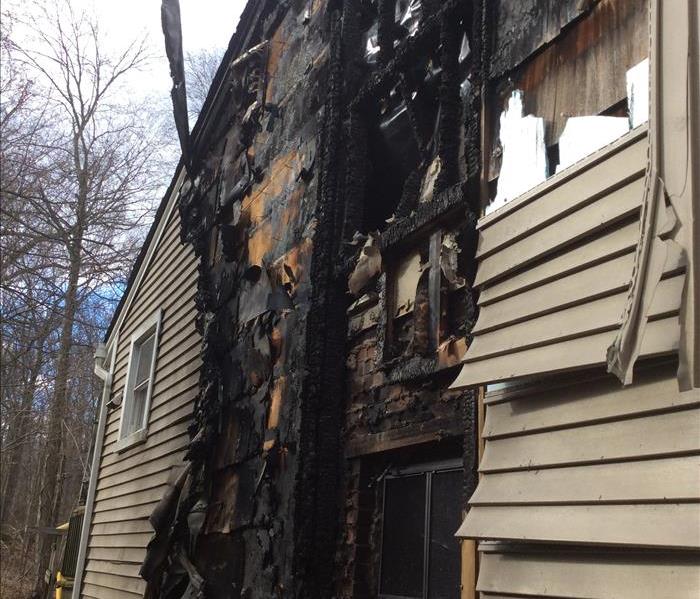 Chimney fires pose a severe fire risk in homes. Have yours cleaned and inspected regularly.
Chimney fires pose a severe fire risk in homes. Have yours cleaned and inspected regularly.
The wintertime brings unique challenges to homeowners in Litchfield County. SERVPRO of Southbury/Torrington responds to calls in which homes have been damaged by chimney fires, oil burner puff backs, biohazardous oil spills and space heater fires as well as water damage from rescue efforts. Help your family keep it safe from a house fire while keeping warm this winter by following these recommendations this fall.
- Have your furnace inspected and serviced. This should be done by a qualified technician annually.
- Have your chimney and vents cleaned and inspected by a professional. They will check for creosote buildup as well as cracks in the lining. This is the easiest way to avoid chimney fires from creosote.
- Use dry, seasoned wood in your fireplace or wood stove to avoid creosote build up.
- Be sure that your fireplace screen is metal or heat-tempered glass, in good condition and secure in its position in front of the fireplace.
- Have a covered metal container ready to use to dispose cooled ashes. (The ash container should be kept at least 10 feet from the home and any nearby buildings.)
- Instruct your children to stay at least 3 feet away from the fireplace, wood/pellet stove, oil stove or other space heaters. Place safety gates around heat sources if young children are in the home.
- Make certain that portable space heaters have an automatic shut-off. They should also be plugged directly into an outlet (not an extension cord) and placed at least three feet from anything that can burn such as bedding, curtains and walls.
- Test your smoke alarms and make sure they are working. Your home should have smoke alarms on every level of the home, inside each sleeping room and outside each separate sleeping area.
- Test your carbon monoxide alarms and made sure they are working.
The fall is the perfect time to get ready for winter. Make sure that your home is ready and safe from fire and smoke damage. If you have a home fire this winter, call SERVPRO of Southbury/Torrington at (203) 267-6262 for a quick response and home restoration built on over 30 years of training and experience.
SERVPRO of Southbury/Torrington Restores Commercial Properties After Fire
9/30/2019 (Permalink)
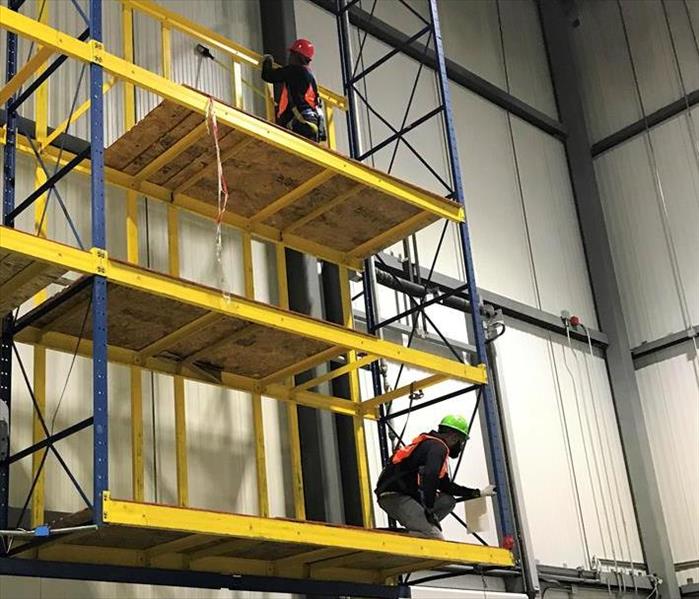 SERVPRO of Southbury/Torrington technicians clean soot off of the walls of a fire damaged warehouse
SERVPRO of Southbury/Torrington technicians clean soot off of the walls of a fire damaged warehouse
Southbury businesses can not afford to have their doors closed for a lengthy period of time due to fire damage.
As a business owner, examining your risk and taking preventative measures as well as educating your employees on procedures can help reduce the damage to your facility.
Assess the risk that fire hazards may pose to your business. The National Fire Protection Association offers handbooks and other publications on the fire safety code in place for businesses. You can also call your local Connecticut fire department and ask the fire marshal if they are available to make a visit and identify any risks.
Maintain your sprinkler system. An automatic sprinkler system will dramatically reduce the spread of a fire in your business as well as keep your employees and customers safe. Have your system properly maintained and inspected so that it works when you need it!
Check your smoke detectors and fire extinguishers. Standard fire safety practices call for smoke detectors and fire extinguishers on every floor. Your best bet is multipurpose extinguishers, which will douse most small fires with ease, without shorting out your electronics.
Educate your employees. Make sure all employees are aware of your fire safety plan by conducting a yearly fire drill and educating new employees. Training in how to use fire extinguishers should also be conducted.
A fire at your Torrington, CT business can be devastating and even force the closure of your business.
SERVPRO of Southbury/Torrington has your back - give us a call at (203) 267-6262 if you have a fire at your commercial property.
Do you Have Renter's Insurance to Protect Your Belongings From Fire and Water Damage?
9/3/2019 (Permalink)
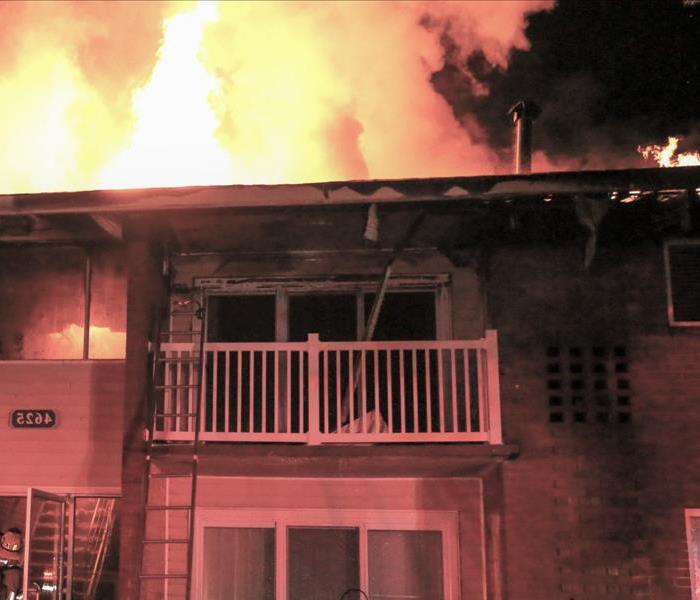 Purchasing a renter's insurance policy will protect your belongings in the case of an apartment fire. .
Purchasing a renter's insurance policy will protect your belongings in the case of an apartment fire. .
There are many residents of Southbury who rent their home or apartment and are unsure of whether they should purchase renter’s insurance.
While it’s true that your landlord has an insurance policy on the building, your belongings are not covered under their policy in the case of theft, or a a disaster such as a fire or flooding.
Having renter’s insurance is an inexpensive way of protecting your furniture, electronics and other belongings. In our years of commercial water and fire damage restoration in New Haven County, we have spoken to many apartment renters who were not insured. It’s devastating enough to wake up to a fire in your apartment and have to leave all of your belongings inside in order to get to safety. But finding out that you will not be reimbursed for your losses doubles the catastrophe.
In an apartment complex, you are vulnerable to damage from other units. If there is a fire, the smoke will travel easily and cause damage to your belongings even if the fire is several floors away. An upstairs neighbors broken washing machine becomes your problem when the water from flooding crashes through your ceiling.
We recommend that all renter's purchase insurance. Believe it or not, the average cost of renters insurance is $15 per month. That’s a small price to pay for the protection of your belongings. Most insurance companies offer renter’s insurance. If you are happy with your automobile insurance company, getting a quote on renter’s insurance from them would be a good start.
Keep Your Summer Fire-Free by Following These Barbecue Safety Tips
6/10/2019 (Permalink)
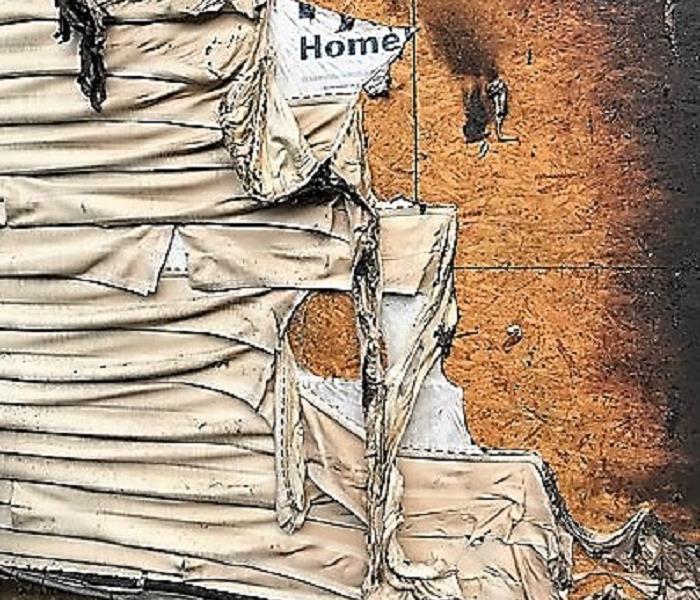 Grill fires can cause massive damage if used too close to the vinyl siding on a home.
Grill fires can cause massive damage if used too close to the vinyl siding on a home.
It’s the summer season in Connecticut and we’ve all been cleaning out our grills and enjoying the barbecue weather.
According to the National Fire Protection Association, outdoor grilling causes an average of 8,900 home fires per year. With 64% of households owning gas grills, they are the cause of the majority of home fires.
Grill fires are often avoidable when you take a few precautionary steps.
Check for propane leaks on your gas grill.
Sometimes, propane leaks are evident by the smell of gas but not always. To check for leaks, you can try a soap and water solution on the hose to check for leaks when the gas is on (it will bubble where the leak is).
Grill away from any structures.
25% of home fires start on a balcony or open porch because the grill is located too close to the structure. The grill can stay hot for up to an hour after it’s turned off so don’t relocate the grill closer to the home after turning it off.
If you use a charcoal grill, use only charcoal starter fluid.
Be careful to control the spray of the fluid prior to starting the fire. If the fire starts to go out, don’t add any starter fluid or any other flammable liquids to the fire.
Avoid an unstable grill.
Keep your grill on a stable, flat surface and make sure it can’t be tipped over.
Keep your grill clean.
Remove grease or fat build-up often. Be certain to clean under the grill grates as well.
Unexpected Fire Hazards in Your Household
5/21/2019 (Permalink)
Homes with old electrical wiring.
Pots left unattended on a stovetop.
Candles accidentally tipped over.
We all know these common causes of household fires. However, there are other fire risks in your home that you may not be aware of.
Microwaves
There are a number of ways in which microwaves pose a fire risk.There might be a small amount of metal on a dish or takeout container that can result in a fire. Foods such as popcorn can easily catch fire if left in too long. If you have a fire in your microwave, turn it off immediately to prevent the fan feeding oxygen to flames and wait until it suffocates. Only open the door when you’re certain the fire is extinguished.
Batteries
All batteries pose a fire risk, even those with a weak charge. However 9 volt batteries are the biggest culprit of fire due to the close proximity of their terminals, which can easily short. When left loose in a drawer or container, the batteries can spark and cause a fire. If you don’t have a battery case, store batteries standing up, placing electrical tape over the ends of each battery (all types – not just 9 volts) to prevent shorts. Do not store batteries in metal containers, or near other metal items such as keys, steel wool, and aluminum foil. When discarding batteries, cover the ends with tape so that they don’t start a fire in the garbage can.
Light bulbs
Using a light bulb with wattage too high for a given outlet, called overlamping, can easily result in a home fire. Determining proper wattage is easy. Simply locate the proper wattage on each fixtures outlet. If the fixture is unmarked, stay under 60 watts to be safe. Take caution when using CFLs (compact fluorescent bulbs). These spiral shaped bulbs could result in fire when improperly used. Avoid using CFLs in any lighting unit where the base of the bulb is enclosed by the fixture, such as with track and recessed lighting. If your CFLs are burning out early and you notice they are brown at the base when you remove them, the bulbs are overheating and could result in fire. Choose a cooler option, such as LED.
Laptops
Laptops can get pretty hot during normal operation. Never leave your laptop on a bed or couch, or any place where its cooling vents are blocked.
Stacks of newspaper and magazines
When left near a heat source, such as a wood stove, these items can ignite quickly. If you must keep old newspapers or magazines, be certain to store them in a cool, dry place in short stacks. It may seem a bit unlikely, but we’ve seen the damage having flammable clutter can do to a home.
Smoke and Soot Removal After the Fire is Out
3/7/2019 (Permalink)
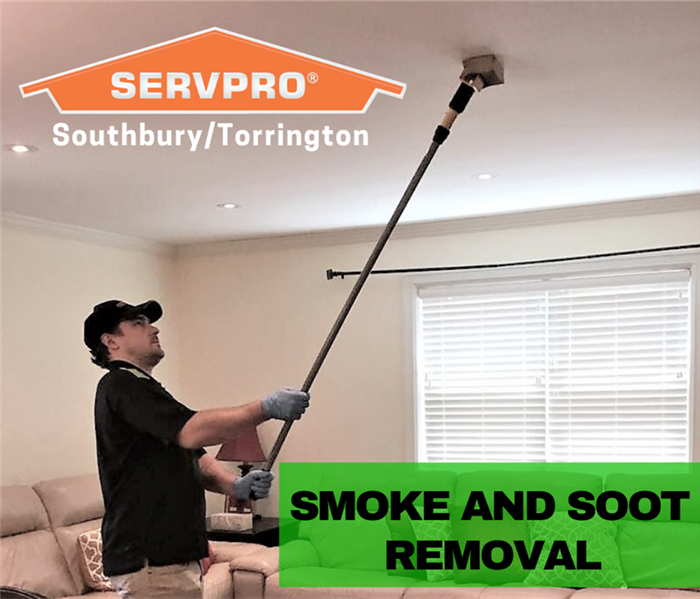 Call SERVPRO of Southbury/Torrington at (203) 267-6262 to restore your home after damage from smoke and soot.
Call SERVPRO of Southbury/Torrington at (203) 267-6262 to restore your home after damage from smoke and soot.
Not only can the flames of a fire cause enormous damage, the ash, soot and smoke residue create a noxious environment in the home.
Both smoke and soot can create irritating odors, discolor walls or ceilings and cause breathing issues if there is a high concentration of ash left over.
Even a small home fire can cause a great amount of damage due to soot and smoke damage. We have arrived at jobs where a small kitchen fire may have caused minimal structural damage, yet smoke has managed to permeate items throughout the home and soot has covered every surface of the home. If you were to look at photos of a home with smoke damage, the damage doesn't appear substantial yet the clean up job is a big one.
SERPVRO of Southbury/Torrington is IICRC Certified to restore your home after a fire. When called to a job in the Woodbury, CT area, SERVPRO of Southbury/Torrington crew members have the expertise and equipment to properly treat all surfaces of ash and soot. Because ash can reactive negatively to certain cleaning agents, possibly causing permanent damage and toxic fumes, this is not a job that can be done with store bought cleaning agents. We have a large production facility in which we clean and store personal belongings off site while the home restoration is ongoing.
Call us at (203) 743-5362 if you need help bringing your Southbury home back to pre-fire condition.
When Garaged Vehicles Catch Fire, Your Entire Home can be Affected by Smoke and Soot
1/18/2019 (Permalink)
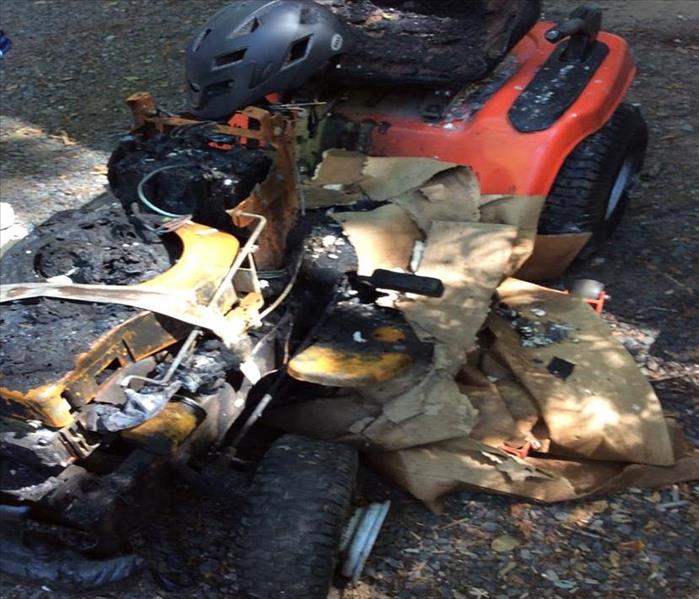 When this lawn tractor caught fire in the garage of this Southbury home, it caused widespread smoke and soot damage.
When this lawn tractor caught fire in the garage of this Southbury home, it caused widespread smoke and soot damage.
We recently had a job at a commercial property in which a truck caught fire on a loading dock, causing a massive amount of smoke and soot damage to the warehouse. It’s not the first time we’ve restored a structure of smoke and soot after a vehicle fire. When a car or lawn tractor is parked in a garage, a small fire can turn catastrophic quickly.
Because of the abundance of fuel in a vehicle, a fire can start and spread quickly.
When the car is parked in the garage of a home or business, this can cause structural, smoke and soot damage throughout the entire building. Vehicles can catch fire for a number of reasons:
- Fuel or Oil Leaks - not only will these flammable liquids stain your garage floor, parts of your car, including the exhaust system, can get hot enough to start a fire.
- Corroded or cracked wiring can cause too much electrical current to be flowing through your system. One sign that this could be a problem in your vehicle is if the fuses blow more often than normal.
- A hot engine, catalytic converter, brakes or exhaust system that comes into contact with a corroded wire can spark a fire as well.
- Electrical Issues - Heated seats, your car battery, and the heating system can all potentially overheat. An aftermarket accessory that has been installed in your car, such as an audio system, might also cause an overload and start a fire.
Many vehicle fires can be avoided with careful maintenance and attention to leaks and old wiring however not all garage fires can be avoided. For those times, SERVPRO of Southbury/Torrington is here to help. We have extensive experience restoring homes and businesses of the smoke and soot a fire leaves.
Call us at (203) 267-6262 if your car catches fire and causes damage to your Middlebury area home or business.
Water and Fire Damage Restoration After Kitchen Fires in Southbury
10/15/2018 (Permalink)
October is National Fire Prevention Month.
Cooking is one of the most common causes of household fires in Connecticut, responsible for 50% of home fires.
According to the National Fire Protection Association, two-thirds of home cooking fires started with the ignition of food or other cooking materials. Ranges accounted for the largest share (62%) of home cooking fire incidents and ovens accounted for 16%.
It only takes a brief moment for a kitchen fire to start and quickly grow out of control.
- Be on alert! Don't use the stove or stove top if you are sleepy or have consumed alcohol.
- Stay in the kitchen while you are frying, grilling, or broiling food.We have all walked away for a moment while cooking only to remember we were cooking by the smell of something burning. If you leave the kitchen for even a short period of time, turn off the stove.
- Use a timer to remind you of items that are cooking. If you have something cooking, check it regularly
- Keep flammables at a safe distance. Keep anything that can catch fire — potholders, wooden utensils, food packaging, towels or curtains — away from your stove top.
- If you have a small grease fire, smother the flames by sliding a lid over the pan and turning off the burner. Leave the pan covered until it is completely cooled.
- If the fire cannot be contained easily, just get out! When you leave, close the door behind you to help contain the fire. More than half (55%) of reported non-fatal home cooking fire injuries occurred when the victims tried to fight the fire themselves.
- Call 9-1-1 from outside the home
It only takes a moment for a fire to start in your home that can cause substantial damage. In addition to the smoke and soot damage left behind, there will also be water damage from firefighting efforts.
After fire emergency services have made your home safe, call SERVPRO of Southbury/Torrington at (203) 267-6262 for fire and water damage restoration. We offer professional services that include water damage clean up, smoke and soot removal, the removal of damaged items as well as the rebuilding of your home to complete the restoration.
Protect Your Southbury Home From Soot and Fire Damage
10/9/2018 (Permalink)
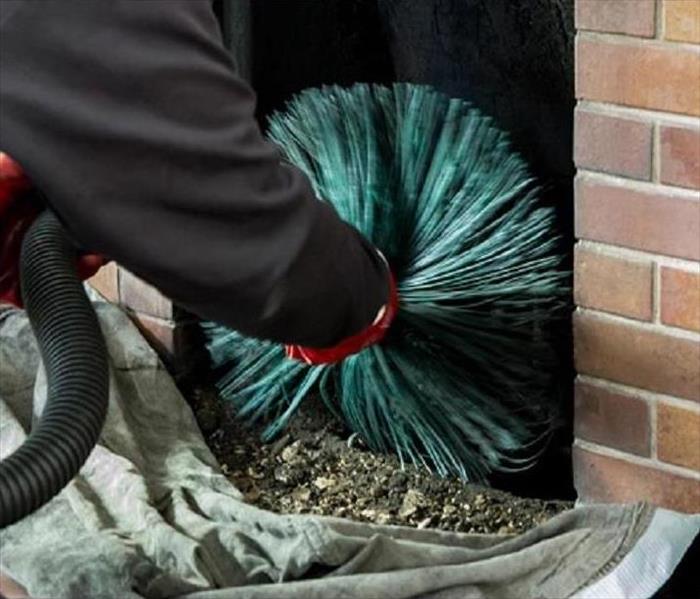 Having your chimney cleaned professionally can reduce your risk of a house fire as by removing creosote and identifying cracks in your chimney.
Having your chimney cleaned professionally can reduce your risk of a house fire as by removing creosote and identifying cracks in your chimney.
Most of the leaves are on the ground in Litchfield County and we've already seen some of that white stuff falling from the sky. It's time to switch gears and settle in for the long, cozy New England winter. Now is the time to take a few steps to ready your Torrington, CT home for the months to come.
Oil Burner Servicing - If you have not already done so, make an appointment to have your oil burner serviced. This is recommended on an annual basis. Having the burner tuned up and cleaned of dust and grime that has accumulated improves system efficiency, which means better heating performance and lower heating costs. It also minimizes the risk of your oil burner requiring a major emergency repair in the midst of freezing temperatures. At SERVPRO of Southbury/Torrington, we respond to many homes each winter that have water damage due to frozen pipes caused by a malfunctioning oil burner.
Wood Stove and Fireplace Cleaning - Many of our customers heat their homes with wood or pellet stoves and fireplaces throughout the Connecticut winter. These alternatives to oil heating provide what is often a more affordable source of heat. We recommend that you check your fireplace for any signs of excessive soot, cracks in the chimney and that your chimney cap is secure. Have your chimney swept annually to avoid soot buildup, or creosote. A blocked chimney can cause a chimney fire, which is not always easily detected. These can spread quickly through the walls and roof of your home and result in massive damage to your home. A blocked chimney or a chimney with an improperly functioning flue can also cause a buildup of carbon monoxide, putting those inside your home at risk.
Prepare the outside of your home - Trim trees with branches that are low laying and may be an issue when covered with snow and ice. Snow and ice causes them to be heavy and possibly cause damage to your home during winter storms. Also, check your gutters to make sure they are free of leaves and debris so that they can function properly. If ice dams on your roof have been an issue for your Sherman home in the past, consider installing roof heat cables that help snow and ice melt on your roof before causing water damage inside your home.
At SERVPRO of Southbury/Torrington, we are ready 24 hours a day to respond to your call. If you do experience a frozen pipe that bursts or a chimney fire or puffback this winter, call us at (203) 267-6262.
We Clean the Soot and Dust that Covers Your Home After a Puffback
9/26/2018 (Permalink)
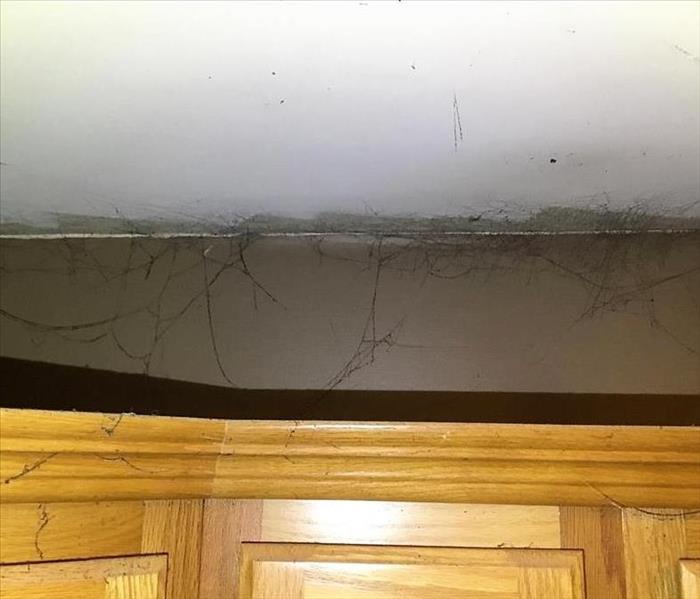 Puffbacks leave distinctive cobwebs of soot throughout the home.
Puffbacks leave distinctive cobwebs of soot throughout the home.
Many people have never heard of a furnace puffback until they experience one themselves.
A puffback is an explosion inside the burner chamber of the furnace or boiler. Puff backs can occur due to an oil burner malfunction in which the burner doesn't ignite immediately and oil fumes are allowed to build up before ignition, causing an explosion when the furnace turns on. Puff backs can also be caused by a partially clogged or cracked nozzles, improper nozzle angle, cracked electrodes, poor adjustment of the air-fuel mixture, a defective spark transformer, shorted ignition cables or dirty or low-grade fuel. Regular maintenance can help Hartford County homeowners reduce the risk of a furnace puffback.
The aftermath of a puffback is the soot and streaks that the explosion blew throughout your home. Often every surface – including carpeting, furniture, walls and drapery - is covered with this black, sticky substance that includes a mixture of oil that is very difficult to remove from any surface. Debris from a puffback can also enter the ventilation system in your home as well as into the cavity behind your walls.
Cleaning up after a puffback is not a do it yourself job- it requires professional cleaning to remove the soot that is spread throughout your home. Do not attempt to clean the soot itself – household cleaners are not effective against soot and may make the problem worse. For example, attempts to wash soot off of a flat-painted wall or ceiling usually leave greasy smears rather than removing the soot. At SERVPRO, we use proprietary tools and cleaners that absorb the soot without spreading it. Fortunately, puffback's are usually covered under your homeowner's insurance.
If you experience a furnace puffback, call the SERVPRO of Southbury/Torrington office at (203) 267-6262.
Our smoke and fire damage specialists have the equipment and training to quickly return your home to a safe, clean, and comfortable environment for you and your family. We're faster to any disaster and are dedicated to responding immediately so that you can recover quickly, with less disruption to your life.
Smoke and Soot Damage Restoration in Southbury, CT
7/16/2018 (Permalink)
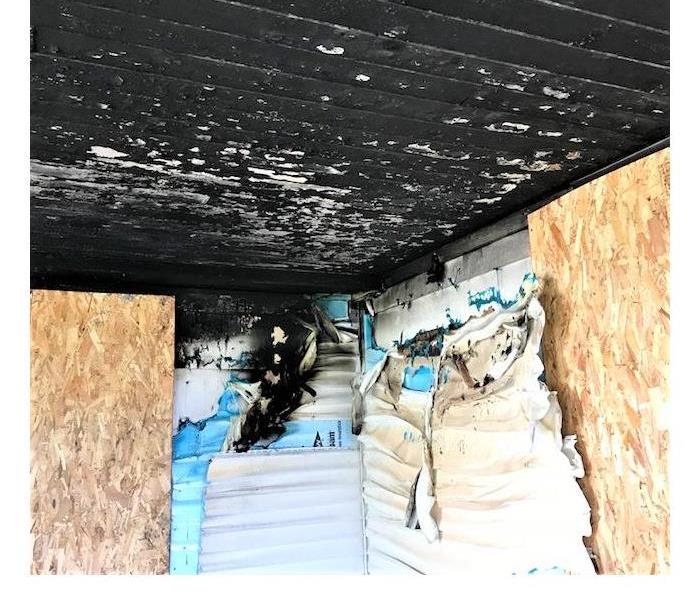 The vinyl siding on this porch created wet smoke damage, which is sticky and difficult to clean,when it melted during a Southbury house fire.
The vinyl siding on this porch created wet smoke damage, which is sticky and difficult to clean,when it melted during a Southbury house fire.
Smoke and soot is very invasive and can penetrate various cavities within your home, causing hidden damage and odor. Our smoke damage expertise and experience allows us to inspect and accurately assess the extent of the damage to develop a comprehensive plan of action.
Smoke and soot facts:
- Hot smoke migrates to cooler areas and upper levels of a structure.
- Smoke flows around plumbing systems, seeping through the holes used by pipes to go from floor to floor.
- The type of smoke may greatly affect the restoration process.
Different Types of Smoke
There are two different types of smoke–wet and dry. As a result, there are different types of soot residue after a fire. Before restoration begins, SERVPRO of Southbury/Torrington will test the soot to determine which type of smoke damage occurred. The cleaning procedures will then be based on the information identified during pretesting. Here is some additional information:
Wet Smoke – Plastic and Rubber
- Low heat, smoldering, pungent odor, sticky, smeary. Smoke webs are more difficult to clean.
Dry Smoke – Paper and Wood
- Fast burning, high temperatures, heat rises therefore smoke rises.
Protein Fire Residue – Produced by evaporation of material rather than from a fire
- Virtually invisible, discolors paints and varnishes, extreme pungent odor.
Our Fire Damage Restoration Services
Since each smoke and fire damage situation is a little different, each one requires a unique solution tailored for the specific conditions. We have the equipment, expertise, and experience to restore your fire and smoke damage. We will also treat your family with empathy and respect and your property with care.
Have Questions about Fire, Smoke, or Soot Damage?
Call Us Today – (203)267-6262.
Fire, Smoke and Water Damage Restoration After Southbury Area House Fires
6/11/2018 (Permalink)
House fires are an extremely devastating and terrifying experience. Once safely outside of your home, you and your family must wait outside and watch your home be further damaged while the fire department extinguishes the flames. House fires leave a home with not only charred walls, soot and smoke damage. There will also be water damage from rescue efforts. Depending on the severity of the fire, you may not be able to return to your home for some time.
Structural Safety - House fires can cause conditions in which your home is no longer structurally sound. Wall studs and other materials integral to the structure of your home may have been burned and compromised during the fire. If the roof was damaged, falling debris might be a hazard. Many homes also have damage to the electrical wiring that requires that the electricity be turned off until it can be repaired.
Smoke Damage - House fires lead to thick, heavy smoke and soot because there is so much upholstered furniture, carpeting, curtains, clothing, and other household items that act as fuel. This soot and smoke can linger inside of the home for a very long time after the fire has been extinguished and can lead to serious health problems. Not only is soot very toxic, but it is also quite tiny in size at just 2.5 microns (compare that to a dust particle which is 40 microns in size!). Smoke odors are absorbed into many household items- carpeting, upholstered furniture and even wood – and are very difficult to remove. SERVPRO of Southbury/Torrington uses specialized equipment and techniques to remove smoke and soot from ceilings, walls, and other surfaces.
Water Damage- The amount of water required to put out a house fire can be staggering – in many cases over 1000 gallons can be used by firefighters. All of that is left when the trucks leave. In many of the house fire damage restoration jobs that we work on, the water damage requires more of a clean up than the fire damage itself. The water removal process begins almost immediately and removes the majority of the water. We will then use dehumidifiers and air movers to remove the remaining water and complete the drying process.
Contents Damage– Fire, water and smoke cause extensive damage to household contents. We understand that your belongings are not "just things" and use advanced restoration techniques to save and restore your treasured items. Not everything can be saved but our team will carefully go through and inventory your home with you to identify special items and family heirlooms.
We can't stop a fire from damaging your Woodbury home but we can help get life back to normal as quickly as possible afterwards. The fire, smoke and water damage restoration services offered by SERVPRO of Southbury/Torrington are based on over fifty years of experience. If you have any questions regarding our fire damage restoration process, give us a call at (203)267-6262.
House Fires Cause Smoke and Soot Damage in Torrington
3/28/2018 (Permalink)
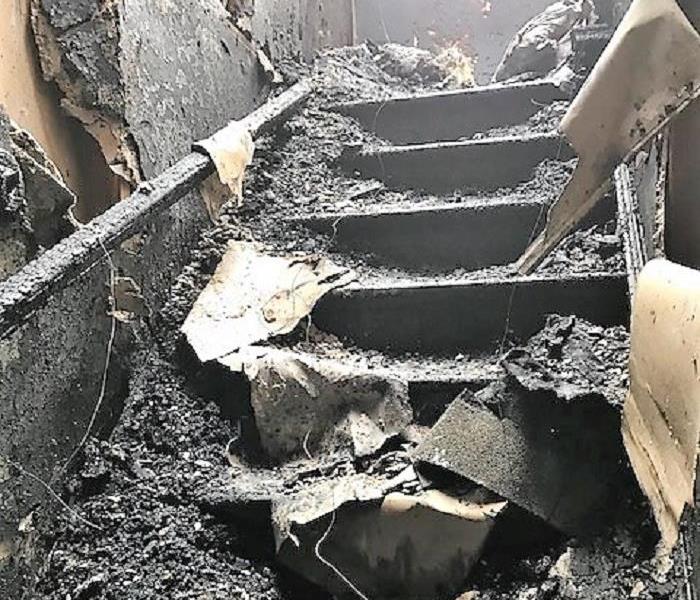 House fires are a traumatic event for homeowners. SERVPRO of Southbury/Torrington is here to help every step of the way.
House fires are a traumatic event for homeowners. SERVPRO of Southbury/Torrington is here to help every step of the way.
Not only does a house fire leave devastating structural damage when it carves its way through a home, the smoke that permeates the walls, floors and furnishings also causes substantial loss. House fires leave a layer of visible soot covering many of the surfaces of a home and unseen smoke in both hard and soft surfaces.
Soot cannot be cleaned off of surfaces easily and requires professional fire damage restoration. Soot is comprised of fine black particles (about ¼ the size of a dust particle) that is the byproduct of the chemical reaction produced by a fire. It settles on surfaces after being carried through the home by smoke. The composition of soot varies based on the type of solid matter that has burned. Some soot, such as from natural materials like paper or wood, is dry and easier to clean. Soot from synthetic materials, such as plastics and nylon, is sticky, thick and black and the removal process is more complex. It is important to call SERVPRO in to begin work immediately when you have a house fire because the soot that has settled on everything is acidic and will start to damage surfaces if not removed. When called to your home for fire damage restoration, the SERVPRO of Southbury/Torrington team will inspect the soot in your home to determine what the best course of treatment will be.
The damage that a house fire can cause is substantial and requires several layers of restoration. First, our team will board up the windows of a home and tarp the roof if required, to protect it from further damage. We then extract the water damage that is usually present due to the fire departments efforts. The next step is the removal of the smoke and soot from your home. Often, we will inventory and pack up your furnishings and belongings to be cleaned off site. To remove the smoke smell (which has most likely infiltrated everything in your home!), we use thermal foggers. Thermal foggers blanket your home with odor neutralizing particles, eliminating the smell permanently. Air scrubbers remove the smoke particles from your homes circulation system, making it safe to breathe again. Once the water, smoke and soot are removed, we clean and sanitize your home.
Finally, the rebuilding process can begin. Unlike some restoration companies, SERVPRO of Southbury/Torrington offers construction services by a fully licensed contractor. Chuck Lynch, is our Construction and Repair Manager, and his crew will rebuild your home, whether you require a few small repairs or a total rebuild. From the emergency board up to the last picture hung back on your wall, our team is with you 100% of the way through the restoration process after your home has a fire.
When Fire and Water Take Control of Your Life, We Help You Take it Back!
1/8/2018 (Permalink)
Mitigation requires quick action. The faster SERVPRO of Southbury/Torrington arrives on-site to perform fire, smoke, and soot cleanup and restoration, the better the results—including lower claim costs. Within four hours of loss notification, we will be on-site to help ensure that fire damages are handled by utilizing the following services.
- Structural Cleaning - After a smoke or fire damage, ceilings, walls, woodwork, carpeting, and floors will often need a thorough cleaning. We will pretest to determine the extent of damage, then use the specific equipment and cleaning products required to clean and protect the different types of surfaces found in your insured’s structure.
- Contents Cleaning - All of the restorable contents in affected areas will be professionally cleaned and deodorized. This includes area rugs, furniture, draperies, and upholstery. Additionally, all the other restorable contents will be cleaned and deodorized to pre loss condition. This includes electronics, art, wood furniture, kitchen items, clothing, bedding, and much more. Finally, we can provide an inventory list of all “to be claimed” items for your insured.
- Deodorization - We provide specialized services that rid your residence or business of offensive odors left by fire or smoke damage. We do not cover up lingering odors with a fragrance. We seek out the sources of the odor and remove them.
Safety Tips - Candles
1/4/2018 (Permalink)
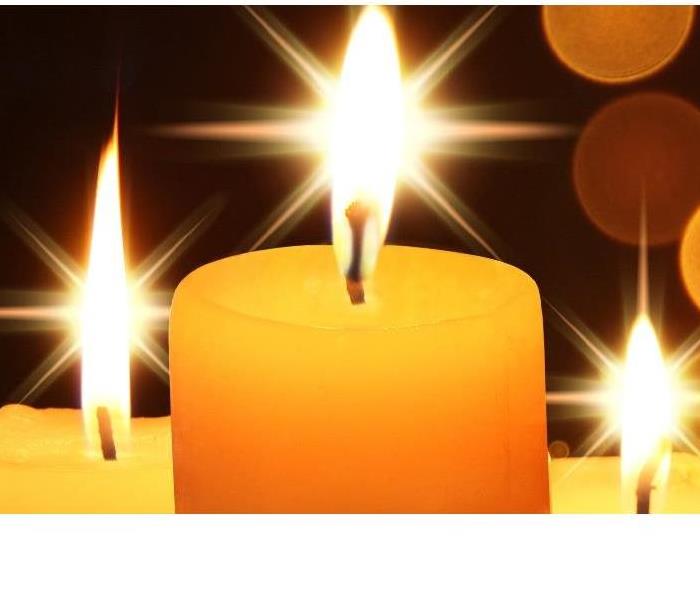 Keep Candles At Least A Foot Away From Anything That Can Burn.
Keep Candles At Least A Foot Away From Anything That Can Burn.
Holiday Safety Tips:
Candles, pretty lights and decorations are just a few of the items that add to the charm and cheer of the holiday season, however, if they are not used carefully your holidays may go from festive to frightening very quickly.
Below are safety tips provided by the National Fire Protection Association, to greatly reduce the fire risk in your home this holiday season.
Two out of five home decoration fires are started by candles. Keep candles at least three feet away from anything that burns.
Use sturdy candle holders that are not likely to tip over and place candles on clear, uncluttered surfaces.
Never leave candles unattended.
Consider using flameless candles instead of real candles.
Make sure you have the correct type of light for your desired décor. Some lights are designed for only indoor or outdoor use, but not both.
Carefully inspect light strands before placing them. Replace any string of lights with worn or broken cords or loose bulb connections. Connect no more than three strands of light sets.
Get rid of your tree after Christmas or when it is dry. Dried-out trees are a fire danger and should not be left in the home or garage. Check with your local community to find a recycling program.
Remember to turn off outside decorative lights and Christmas tree lights before leaving or going to bed.
Bring outdoor electrical lights inside after the holidays to prevent hazards and make them last longer.
Smoke alarms save lives! Install smoke alarms on each level of your home, near kitchen and sleeping areas. Don’t forget to replace all batteries at least once a year.
SERVPRO of Southbury/Torrington wishes you a safe and happy holiday season!
Different Types of Smoke
11/28/2017 (Permalink)
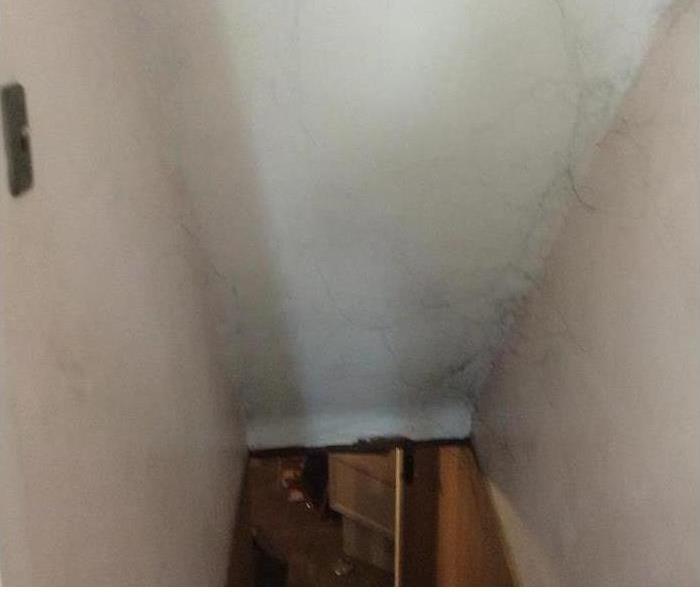 an example of a puff back - soot webs in the corners of the ceiling.
an example of a puff back - soot webs in the corners of the ceiling.
Some of the different types of smoke are:
Fuel Oil Soot – Furnace puff backs
Wet Smoke – Plastics and rubbers low heat, smoldering, pungent odor, sticky, smeary.
Dry Smoke – Paper and wood fast burning, high temperatures, heat rises therefore the smoke rises.
Protein – Produced by evaporation of material rather than from a fire. Virtually invisible, discolors paints and varnishes, extreme pungent odor.
Other Types – Tear gas, fingerprint powder and fire extinguisher residue.
As we enter into the colder months and turn up our thermostats, one of the common types of smoke is fuel oil soot released from your furnace, called a “puff back.”
A puff back is a different type of smoke, a sudden dispersion of black smoke and soot throughout the house. Another identifier can be the appearance of cobwebs, but are actually “soot webs” which are much darker and has an oil odor present. The oil base soot disperses throughout one’s home affecting walls, ceilings, carpets and furniture to name a few. It is extremely difficult to remove and there may be a foul odor in the affected rooms.
The cause for a puff back may vary from age of boiler, lack of maintenance, failure to make needed repairs and/or a malfunction. All heating systems, especially oil-fired, should be inspected, cleaned and adjusted at least once a year by a qualified professional.
Should the unexpected happen, clean-up should be handled by a professional cleaning company like SERVPRO of Southbury/Torrington.
The Importance of Dry Vent Cleaning:
11/17/2017 (Permalink)
The Importance of Dry Vent Cleaning:
According to FEMA, failure to clean home dryers causes 34% of home dryer fires. Home dryer fires cause $35 million in property loss and can even cause injury or death. To reduce the risk of these fires happening in your home, SERVPRO of Southbury/Torrington can help clean dryer vents and ducts that may have lint buildup. Other tips for keeping your dryer vents clean from the National Fire Protection Agency include cleaning the lint filter before and after each load and making sure the outdoor vent flap stays open and that it is not restricted by snow, a bird’s nest, or other potential obstacles. For more information on dry vent cleaning visit us at www.SERVPROsouthburytorrington.com or call 203-267-6262.
Safety Precautions For This Heating Season.
11/16/2017 (Permalink)
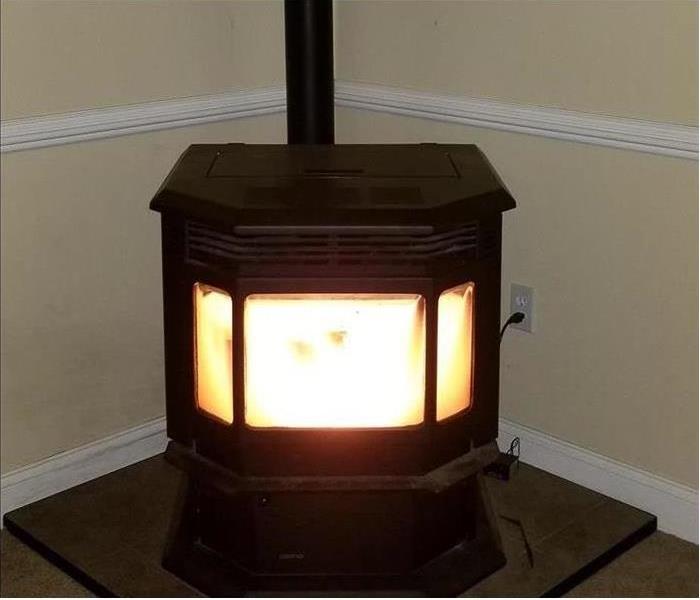 Pellet Stove
Pellet Stove
Winter is upon us and with colder weather comes shorter days and lower temperatures! Many people use alternative heating sources like fireplaces, portable space heaters, pellet and wood burning stoves to help keep their homes toasty. Did you know, heating equipment is a leading cause of home fire deaths? According to the National Fire Protection Association, heating equipment fires account for $1 billion in direct property damage annually. Keep the following safety tips in mind to help reduce risk heating-related fires:
- Keep flammable items at least three feet away from heating equipment like furnace, fireplace, wood stove, or a portable space heater.
- Have a three foot “kid-free zone” around open fi res and space heaters.
- Be sure that your fireplace has a screen in front of it to help stop sparks from flying into the room.
- Ashes should be cool before putting them in a metal container. Keep the metal container a safe distance away from your home.
- Remember to turn portable heaters off when leaving the room or when going to bed.
- Test smoke alarms monthly and change batteries annually.
- Always use the right kind of fuel, specified by the manufacturer, for fuel burning space heaters.
- Heating equipment and chimneys should be inspected every year by a qualified professional.
Should your property experiences smoke or damage, we are here to help.
Smoke Alarms Save Lives!
11/16/2017 (Permalink)
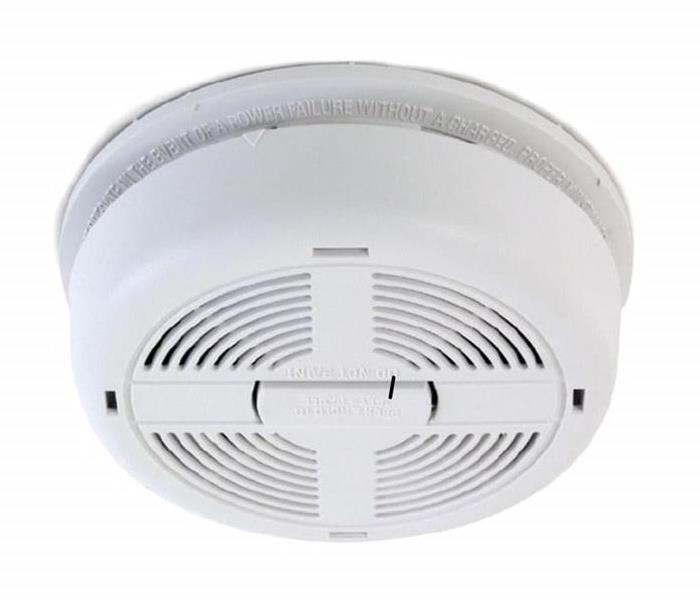 Smoke alarm
Smoke alarm
Smoke alarms save lives when properly installed and maintained, according to the National Fire Protection Association (NFPA). In homes, smoke alarms should be in every bedroom, outside each sleeping area, and on every level, including the basement. Extra smoke alarms may be needed in large homes. Test smoke alarms monthly using the test button. Smoke alarms with non-replaceable batteries need the entire smoke alarm unit replaced every ten years. Other alarms need batteries replaced every year, and the unit replaced every ten years. If the alarm chirps signaling low battery, take the proper steps to replace the unit or the batteries immediately. Never disable or remove the battery from an alarm. Almost half of fires where smoke alarms were present but did not activate had missing or disconnected batteries (NFPA). If you need help installing, testing or changing batteries in your smoke alarms, contact your local fire department, an electrician or the American Red Cross. Be sure your home has a fire emergency plan in place and conduct regular fire drills with your family. For more information on how smoke alarms save lives, visit http://www.nfpa.org/.
Grilling Safety Tips:
7/14/2016 (Permalink)
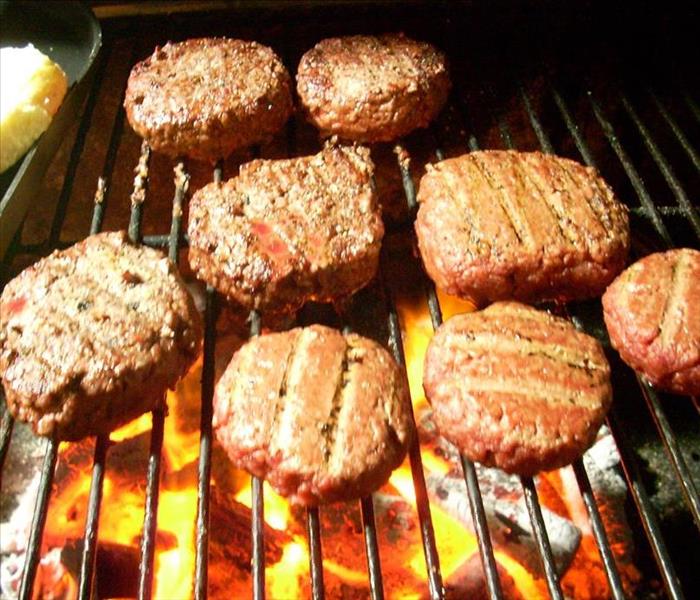 Hamburgers - photo by Carlos Lopez
https://www.flickr.com/people/7632976@N02
Hamburgers - photo by Carlos Lopez
https://www.flickr.com/people/7632976@N02
Grilling Tips:
There is nothing like firing up the grill during the summer months! Did you know July is the peak month for grill fires? A backyard barbecue can become dangerous if safety precautions aren’t considered.
· Propane and charcoal BBQ grills should only be used outdoors
· The grill should be placed away from the home, deck railing and out from under leaves and overhanging branches
· Keep children and pets away from grill
· Keep your grill clean by removing grease buildup form the grills and in trays below the grill
· Never leave grill unattended
· When using a charcoal grill, let the coals completely cool before disposing in a metal container
We at SERVPRO of Southbury/Torrington wish you a Happy and Safe Grilling Season!
4th of July Safety Tips:
6/27/2016 (Permalink)
4th of July Safety Tips:
Summer is in full swing with barbecues, parades and firework displays; but along with all the festivities are visits to emergency rooms, especially during the month of July.
Each year, an average of 23 people are injured due to fireworks-related incidents, according to the U.S. Consumer Product Safety Commission. Also, fireworks are responsible for thousands of house fires each year with millions of dollars in property damages.
Consider the following tips to ensure your 4th of July celebrations are disaster-free!
· Light fireworks outdoors on a driveway or other paved surface(s) at least 50 feet away
· Avoid lighting fireworks near home and away from flammable materials (dry grass or mulch)
· Anyone using fireworks or standing nearby should wear protective eyewear
· Do not try to re-light or handle malfunctioning fireworks
· Keep a bucket of water nearby to fully extinguish fireworks that don’t go off or in case of fire
· Never pick up left over fireworks as they may still be active
· The safest way to enjoy fireworks is to attend a public display conducted by trained professionals
SERVPRO of Southbury/Torrington wishes you a Happy 4th of July and a Safe Summer!




 24/7 Emergency Service
24/7 Emergency Service